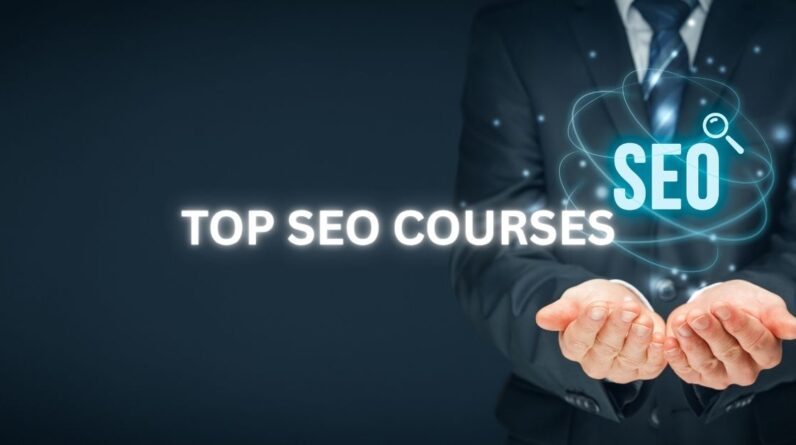
Want to get more customers for your business? One powerful way to do that is by improving your online visibility. In today’s digital age, having a strong presence on search engines can make all the difference. So, how can you achieve that? The answer lies in Search Engine Optimization (SEO). By implementing effective SEO techniques, you can boost your business’s online visibility and attract more potential customers to your website. In this article, we will explore some practical tips and strategies to help you optimize your online presence and drive more traffic to your business.
Understanding SEO
What is SEO?
SEO stands for Search Engine Optimization. It is the practice of optimizing your website and its content to improve its visibility and ranking on search engine results pages (SERPs). In simple terms, SEO helps your website appear higher in search results when someone searches for relevant keywords or phrases related to your business.
Why is SEO important for your business?
SEO is crucial for your business because it helps increase online visibility, drives organic traffic to your website, and boosts your brand’s credibility. When your website ranks higher on search engines like Google, it becomes more likely to attract potential customers. Additionally, SEO allows you to target specific keywords and tailor your content to meet the needs and interests of your target audience.
How does SEO work?
SEO works by optimizing various aspects of your website and its content to make it more attractive to search engines. Search engines use algorithms to determine which websites are relevant to a search query and then rank them accordingly. SEO involves techniques such as keyword research, on-page optimization, technical SEO, link building, local SEO, content marketing, monitoring and analytics, user experience, and staying updated with SEO trends.
Keyword Research
Importance of keyword research
Keyword research is the foundation of any successful SEO strategy. It involves identifying the keywords and phrases that your target audience is using to search for products or services related to your business. By understanding the keywords that your potential customers are using, you can optimize your website and create content that aligns with their search intent.
Tools for keyword research
There are several tools available to aid in keyword research, such as Google Keyword Planner, SEMrush, Moz Keyword Explorer, and Ahrefs. These tools provide valuable insights into search volumes, competition, and related keywords, which can help you identify the most relevant and valuable keywords for your business.
Choosing the right keywords
When choosing keywords, it’s essential to consider their relevance, search volume, and competition. It’s advisable to target a mix of high-volume keywords to attract more organic traffic and long-tail keywords to capture more specific and targeted searches. Long-tail keywords often have less competition, making it easier for your website to rank higher for those terms.
On-Page Optimization
Optimizing your website structure
Optimizing your website structure involves ensuring that your website is well-organized and easy to navigate for both users and search engines. This includes creating a logical hierarchy of pages, using descriptive URLs, and implementing a clear and intuitive menu and internal linking structure. By optimizing your website structure, you can improve user experience and help search engines understand and crawl your site more efficiently.
Creating unique and engaging content
High-quality and unique content is crucial for both users and search engines. By creating informative and engaging content, you can establish yourself as an authority in your industry and attract more organic traffic to your website. Make sure your content is well-written, relevant, and provides value to your target audience. Incorporate keywords naturally into your content to optimize it for search engines.
Optimizing meta tags and descriptions
Meta tags and descriptions are HTML elements that provide information about your webpage to search engines and users. Optimizing these elements involves crafting compelling meta titles and descriptions that accurately reflect the content of your page and entice users to click through to your website. Include relevant keywords in your meta tags to improve your website’s visibility in search results.
Technical SEO
Improving site speed and performance
Site speed and performance are crucial factors in both user experience and search engine rankings. Slow-loading websites can lead to higher bounce rates and lower rankings on search engines. To optimize site speed, you can compress images, minify code and scripts, use caching techniques, and leverage content delivery networks (CDNs). Regularly monitor and optimize your website’s performance to ensure it meets the expectations of both users and search engines.
Ensuring mobile-friendliness
With a significant increase in mobile searches, it’s essential for your website to be mobile-friendly. Google pays close attention to mobile-friendliness when ranking websites. To ensure your website is mobile-friendly, use responsive design, optimize font sizes and touch targets, and test your website on various mobile devices and screen sizes. A mobile-friendly website not only improves user experience but also helps your SEO efforts.
Optimizing URL structure
Optimizing your URL structure involves creating clear and descriptive URLs that are easy to read and understand for both users and search engines. Use relevant keywords in your URLs and separate words with hyphens to enhance readability. Avoid using lengthy and cryptic URLs that provide no value to users or search engines. A clean and optimized URL structure can contribute to better rankings and click-through rates.
Link Building
Importance of link building
Link building is an integral part of SEO as it helps search engines determine the credibility and authority of your website. When reputable websites link to your site, search engines view it as a vote of confidence and are more likely to rank your website higher in search results. Link building also drives referral traffic to your website, increasing exposure and potential customers.
Types of links
There are two main types of links: internal links and external links. Internal links are links within your own website that connect different pages and content. External links are links from other websites that direct users to your site. Both types of links are important for SEO. Internal links help improve website navigation and spread authority throughout your site, while external links provide validation and credibility.
Creating a link building strategy
A successful link building strategy involves various techniques, such as guest blogging, creating shareable content, reaching out to influencers and industry leaders, directory submissions, and engaging in social media promotion. Focus on obtaining quality links from reputable and relevant websites rather than quantity. Building a strong and natural backlink profile takes time and dedication, but it can have a significant impact on your website’s SEO performance.
Local SEO
Benefits of local SEO
Local SEO is a specialized form of SEO that helps businesses optimize their online presence for local searches. By targeting local keywords and optimizing your Google My Business page, you can improve your visibility in local search results. Local SEO is especially beneficial for businesses that have physical locations or provide services to specific geographic areas.
Optimizing Google My Business page
Creating and optimizing your Google My Business (GMB) page is essential for local SEO. Ensure your GMB listing is complete and accurate, including your business name, address, phone number, website, and hours of operation. Encourage customers to leave reviews on your GMB page, as positive reviews can boost your credibility and rankings in local search results. Regularly update and maintain your GMB profile to ensure accurate information.
Generating customer reviews
Customer reviews play a crucial role in local SEO, as they provide social proof and influence potential customers’ purchasing decisions. Encourage satisfied customers to leave reviews on platforms such as Google, Yelp, and Facebook. Respond to reviews, both positive and negative, to show that you value customer feedback. Positive reviews and ratings can have a significant impact on your local SEO rankings and reputation.
Content Marketing
Creating high-quality content
Content marketing is the strategic creation and distribution of valuable and relevant content to attract and engage a target audience. High-quality content helps establish your brand’s expertise and builds trust with your audience. Create informative and engaging blog posts, articles, videos, infographics, and other types of content that provide value to your target audience. When your content is valuable, users are more likely to share it, link to it, and engage with your brand.
Using keywords effectively in content
To optimize your content for search engines, incorporate relevant keywords naturally into your content. However, avoid keyword stuffing, which is the excessive and unnatural use of keywords for the sole purpose of ranking higher in search results. Focus on creating content that is readable and valuable to users. Use keyword research tools to identify relevant keywords and incorporate them into your content strategically.
Promoting content through social media
Social media platforms provide an excellent opportunity to promote your content and increase its reach. Share your content on platforms like Facebook, Twitter, LinkedIn, and Instagram to reach a wider audience. Engage with your followers, respond to comments, and encourage social sharing. Utilize relevant hashtags and consider partnering with influencers or running social media ads to amplify your content’s visibility and drive more traffic to your website.
Monitoring and Analytics
Tracking website traffic
Monitoring and analyzing your website’s traffic is crucial for understanding the effectiveness of your SEO efforts. Use web analytics tools like Google Analytics to track metrics such as the number of visitors, traffic sources, bounce rates, and conversion rates. These insights can help you identify areas of improvement, measure the success of your SEO strategies, and make data-driven decisions to optimize your website for better performance.
Measuring keyword rankings
Keyword rankings provide valuable insights into how well your website is performing in search engine results. Use keyword tracking tools to monitor your keyword rankings regularly. By tracking your rankings, you can identify keywords that are performing well and those that need improvement. Adjust your SEO strategies accordingly to maintain or improve your rankings for targeted keywords.
Using analytics tools to optimize SEO
Web analytics tools offer a wealth of data that can help you optimize your SEO efforts. Analyze user behavior, conversion funnels, and engagement metrics to identify areas where your website can be improved. Use this data to refine your keyword targeting, optimize your content, and enhance user experience. Regularly review and analyze your analytics to stay informed about the impact of your SEO strategies and make necessary adjustments.
User Experience
Improving website navigation
User experience plays a vital role in SEO, as search engines prioritize websites that provide a positive and seamless user experience. Improve your website’s navigation by organizing your content logically and implementing clear menus and navigation links. Use descriptive anchor text for internal links to help users navigate between pages effortlessly. If your website is easy to navigate, users are more likely to stay longer, engage with your content, and convert into customers.
Enhancing page loading speed
Page loading speed is a critical factor in user experience and SEO. Slow-loading websites can frustrate users and lead to higher bounce rates, negatively impacting your search engine rankings. Optimize your website’s loading speed by compressing images, minifying code, reducing server response time, and leveraging browser caching. Regularly monitor and test your website’s loading speed to ensure it meets industry standards and delivers a fast and smooth user experience.
Creating mobile-friendly designs
With the increasing use of mobile devices for online searches, having a mobile-friendly website is essential for both user experience and SEO. Implement responsive design, which automatically adapts your website layout to different screen sizes. Test your website on various mobile devices to ensure it displays correctly and functions smoothly. Mobile-friendly designs improve user satisfaction, reduce bounce rates, and help your website rank higher in mobile search results.
Keeping Up with SEO Trends
Staying updated with algorithm changes
Search engine algorithms are constantly evolving, and staying updated with these changes is crucial for maintaining and improving your website’s visibility. Stay informed about algorithm updates and changes in search engine guidelines through reputable sources, industry forums, and search engine blogs. Regularly review your website’s performance and rankings to identify any potential impact from algorithm changes and adjust your SEO strategies accordingly.
Adopting new SEO strategies
As SEO evolves, new strategies and techniques emerge that can help improve your website’s performance. Stay open to adopting new SEO strategies that align with industry best practices and search engine guidelines. Experiment with new tactics, such as voice search optimization, schema markup, structured data, and video SEO, to strengthen your online presence and gain a competitive edge. Continuously test and adapt your SEO strategies to stay ahead of the curve.
Utilizing voice search optimization
Voice search is becoming increasingly popular, thanks to the rise of voice assistants like Amazon Alexa and Google Assistant. Optimizing your website for voice search involves understanding and targeting long-tail keywords and creating conversational and natural-sounding content. Consider incorporating FAQs and voice-friendly content formats, such as podcasts and audio transcripts, to optimize your website for voice search. Voice search optimization can help you reach a broader audience and enhance your online visibility.
In conclusion, understanding SEO and implementing effective strategies can significantly boost your business’s online visibility. By conducting keyword research, optimizing your website structure, creating high-quality content, building quality backlinks, optimizing for local SEO, and focusing on user experience, you can improve your website’s ranking on search engines and increase organic traffic. It’s vital to monitor and analyze the performance of your website using analytics tools, stay updated with SEO trends, and adapt your strategies to meet the evolving landscape of search engine optimization. By investing in SEO, you can attract more customers, establish your brand’s credibility, and achieve long-term success in the online marketplace.







